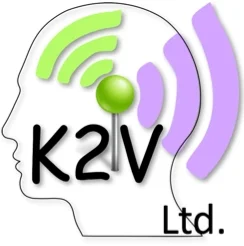Funnel optimisation works by harvesting and releasing knowledge lying dormant in your organisation and is a five-stage process for each opportunity compressed in to one week. An extra day should be added for each opportunity run concurrently thereafter.
Stage 1 (Framing) – This begins with the appointment an opportunity manager in your organisation, who may be the project manager for a farm-in opportunity or a member of a new ventures team. Whether the assessment is for one opportunity or several opportunities, someone within the organisation should be responsible for compiling and evaluating the contributions made by others. An initial meeting will be held between the opportunity manager and K2V Ltd to agree a timetable and the weighting on value metrics that best matches the opportunity business model.
Stage 2 (Knowledge harvesting) – The opportunity manager issues an invitation to anyone who has content knowledge about the opportunity or opportunities, or the basin(s) where the opportunities exist. Contributors will be invited to use the Knowledge PinMap™ to register their content knowledge for all opportunities being considered, which captures:
1. When and for how long work was done by them
2. The function in role (what capacity was the work done)
3. The level of knowledge achieved in that capacity (scale of 1 to 5)
4. The nature of the business context that knowledge was acquired
It should be made clear that it makes no difference how long ago that person worked on the opportunity, so long as there is context to their content knowledge. The opportunity manager will use the Knowledge PinMap™ to assess which of the knowledge holders who responded are qualified to contribute isolated opinion on whether to advance the opportunity further.
Stage 3 (Opportunity kracqing) – Selected knowledge holders will be invited to kracq each opportunity through an online questionnaire supplied by K2V Ltd to establish their perception of geo-technical and geo-commercial value drivers for the opportunity (agreed in stage 1). Contributors will be invited to register their opinion without presenting evidence for it. Kracqing will include a mathematically derived maturity index and an invitation to nominate the best working analogue. It is recognised that opinions recorded are historic and that there is context to all historic perceptions.
Stage 4 – (Opportunity screening) Knowledge has now been harvested and the opportunities individually kracqed, which is the longest lead part of the process. K2V provides tools to visually represent the range of kracqed opinion and to begin the process of collapsing cognitive bias. Any obvious outliers in opinion should be identified and discussed as appropriate.
Stage 5 (Opportunity ranking) A one day workshop will be held to capture the full range of opinions captured by the kracqing. The discussion will focus on 5 geo-technical and 5 geo-commercial metrics to establish whether there is a common convergence on the most likely outcome or whether the full range should be given equal weighting. The discussion will conclude with a live interactive plenary session to revise the range of opinion in the room and to collapse opinion to the most likely outcome agreed by participants. The best geo-technical working analogue will be selected and the gap between that and the current position will be visualised using K2V tools to aid in a discussion of how to close the gap as part of a future roadmap. This will conclude the funnel optimisation process.
